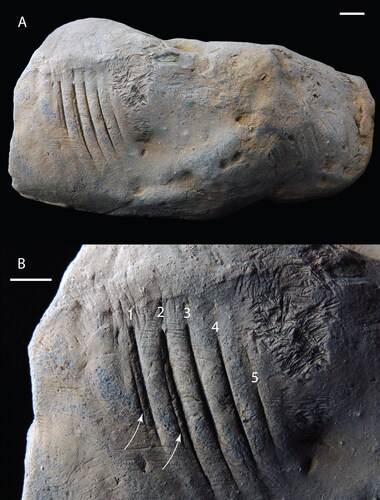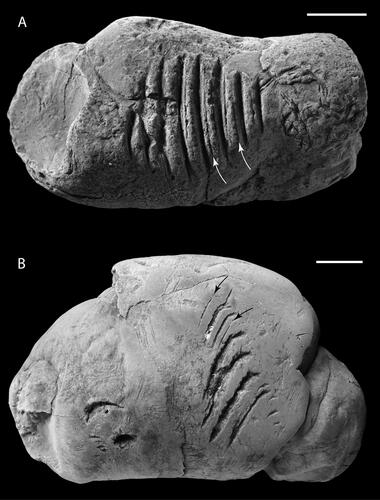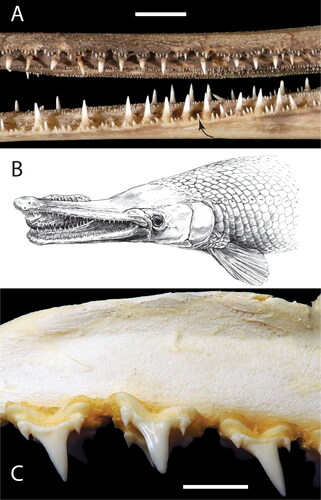Figures & data
Figure 1. CMM-V-8998, holotype of Machichnus dimorphodon isp. nov., a gar-bitten crocodile coprolite. (a) Full view of the coprolite showing the location of the bite marks towards one end of the specimen. (b) Close-up view of the gar bite marks showing the two orders of tooth gouge marks (primary and secondary). The white numbers 1–5 demark the primary gouges. The white arrows point to two of the secondary gouges that lie parallel and adjacent to the primary gouges. To the right of numbers 4 and 5, notice the tight clustering of numerous short surface feeding traces, thought to be invertebrate grazing in origin. Specimen lightly dusted with sublimed ammonium chloride. Scale bars equal 10 mm.

Figure 2. (a) CMM-V-4480, a gar-bitten coprolite featuring the paratype of Machichnus dimorphodon isp. nov. White arrows point to two of the secondary gouges that lie parallel and adjacent to the primary gouges. Modified from Godfrey and Palmer (Citation2015) (b) CMM-V-6615, a vertebrate-bitten coprolite featuring the referred specimen of M. dimorphodon isp. nov. Black arrows point to two of the secondary gouges that lie parallel and adjacent to the primary ones. Both specimens lightly dusted with sublimed ammonium chloride. Scale bars equal 10 mm.

Figure 3. (a) Left lateral view of the mid-section of the rostrum of an extant gar (Lepisosteus osseus, CMM-O-33) showing the presence of small peripheral teeth (one of which is highlighted by a black arrow along the lower jaw) adjacent to the fewer larger fangs in both the upper and lower jaws. (b) Life drawing by Tim Scheirer of the way in which the type specimen might have been bitten. Reproduced from Godfrey and Palmer (Citation2015). (c) CMM-0-0007, labial view of a short section of the upper left lateral dentition of the extant porbeagle shark, Lamna nasus, showing teeth with a large main cusp and smaller bilateral cusplets. Scale bars equal 10 mm.

